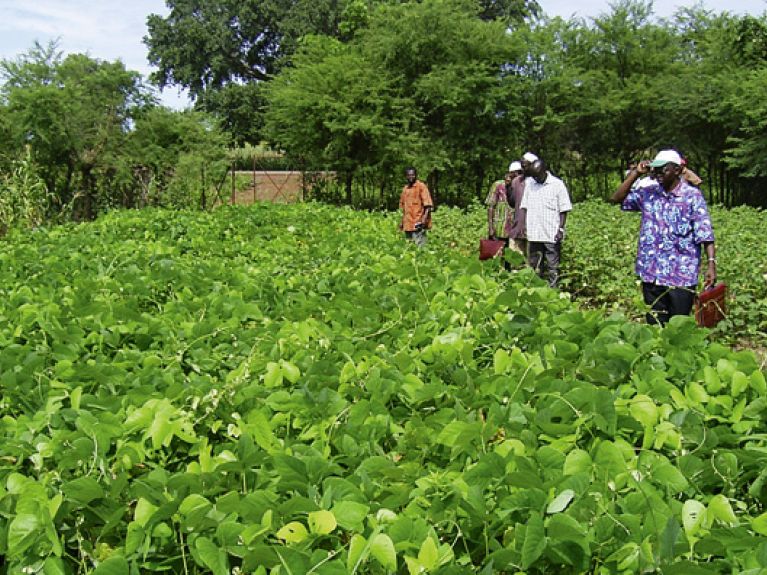Securing the future of food
Conservation agriculture can considerably boost soil fertility. As part of its Africa Strategy, the Federal Ministry of Education and Research is funding a project designed to optimise the methods used.

On no other continent is the population growing as quickly as in sub-Saharan Africa. The current annual growth rate is around 3%, and the need for food is increasing accordingly. But agricultural production can barely keep pace with this trend. Numerous German education, research and intermediary organisations have long been active in African countries – in some cases for over five decades. Together with African partners, they are tackling a wide range of global challenges such as food insecurity. Many projects are being funded by the Federal Ministry of Education and Research (BMBF), which has continually stepped up its engagement in recent years. In June 2014, Federal Research Minister Johanna Wanka presented her ministry’s new Africa Strategy together with Martial De-Paul Ikounga, African Union Commissioner for Human Resources, Science and Technology. Germany and the African continent have been cooperating successfully for as long as 30 years. But cooperation has now been placed on a new footing: research is to be conducted on a partner-like basis and for the benefit of both sides.
One of the BMBF-funded cooperation projects focuses on so-called conservation agriculture, or CA for short. The method’s most important principle is its rejection of intensive tillage. Ploughing is basically taboo, emphasises Johannes Schuler of the Leibniz Centre for Agricultural Landscape Research (ZALF) in the Brandenburg town of Müncheberg, which is in charge of cooperation within the project. It upsets the ecological balance, he explains – and that leads to increased evaporation. The soil dries out more quickly. Farmers that work according to CA principles also ensure that there is a meaningful rotation of crops and permanent soil cover. This slows weed growth and also reduces moisture loss. The CA method is not entirely new but it’s effective: it conserves soils and makes them more fertile, explains Johannes Schuler. ZALF and four other research institutions in Burkina Faso, Kenya, Portugal and Austria are helping to popularise conservation agriculture with a project entitled INCAA – Innovative Conservation Agriculture Approaches: Food Security and Climate Action Through Soil and Water Conservation. Experts from France, Zimbabwe and Malawi are also involved.
If conservation agriculture is to become established in sub-Saharan Africa, existing methods, which have already been applied, for example, in North and South America, must be adapted to suit local conditions, explains the agronomist. Two challenges here are widespread water shortages and lack of fertilisers. That is why the project partners have reintroduced a traditional method in Burkina Faso: they put crop plants in previously dug and partly refilled holes. Water collects there and losses through runoff are minimised. A similar approach is now also being used in Zambia, Johannes Schuler reports. There, the holes are smaller, he says, and mainly designed for applying fertiliser. “Because the fertiliser is in direct contact with the plants’ roots, the yields are much higher.” In the case of maize, it is even possible to double the yield.
